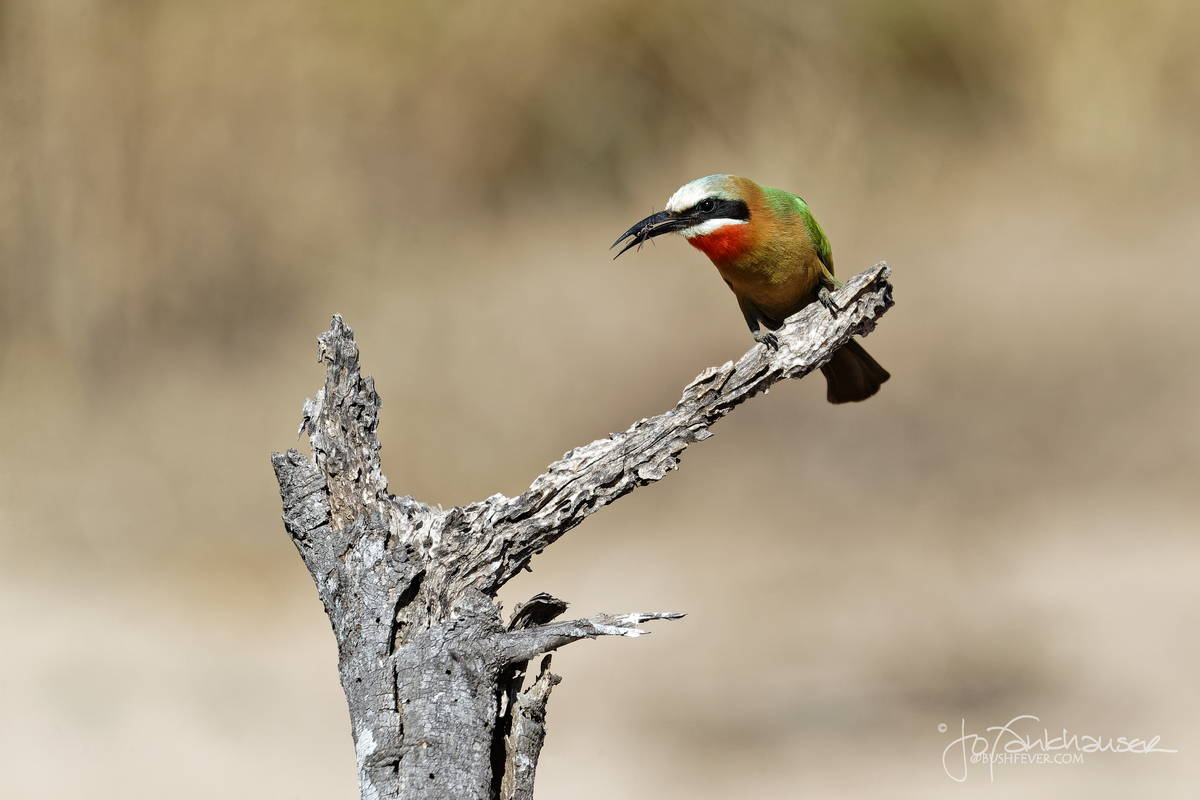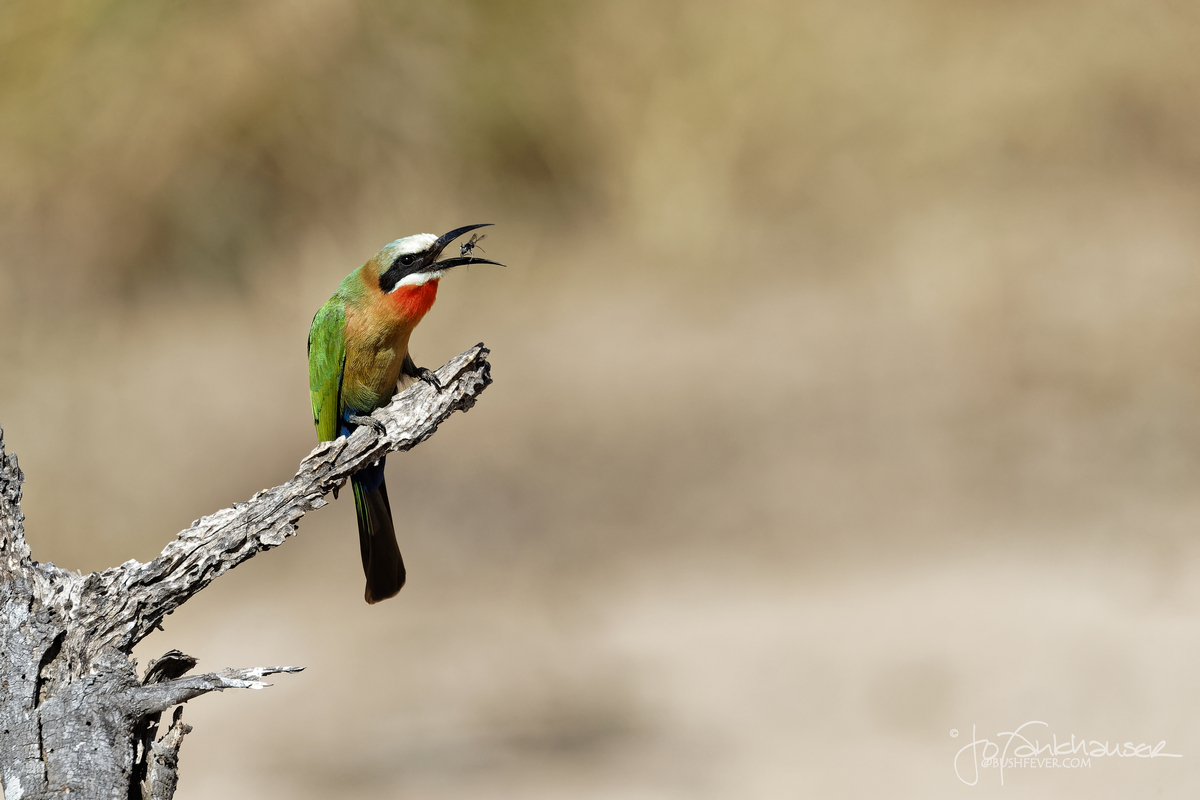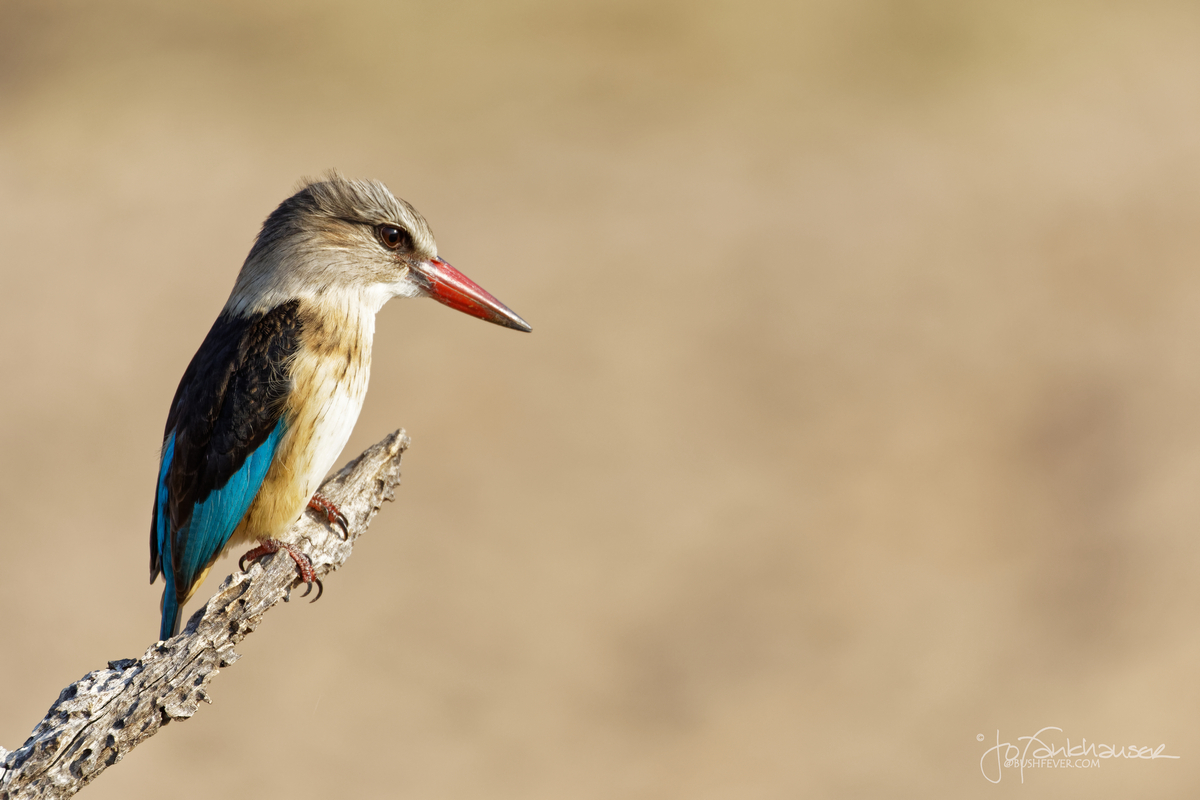Early one morning, a little after successfully avoiding the traditional mad “first out the gate” rush out of Satara Camp, we decided to take a leisurely drive towards Orpen Gate. Before turning off towards Orpen, we decided to continue south for a short distance to take a look for action at a largish pond in the N’wanetsi River, located below the bridge where the tar road crosses the river’s course.
From the bridge we saw two beautiful Saddle-billed Storks fishing in the pond, and in order for me to get the best shooting position possible we decided to drive on past the bridge, make a U-turn and then position the car on the bridge as close as possible to the railings.
While making the U-turn, a huge bull elephant silently emerged from the riparian vegetation to the right of the road and ambled slowly in the direction of the pond to the left of the bridge. Once the elephant had crossed the road and lumbered down to the pond, we parked the car on the bridge as planned. The elephant was busy drinking at the far end of the pond, obscured somewhat by the trees.
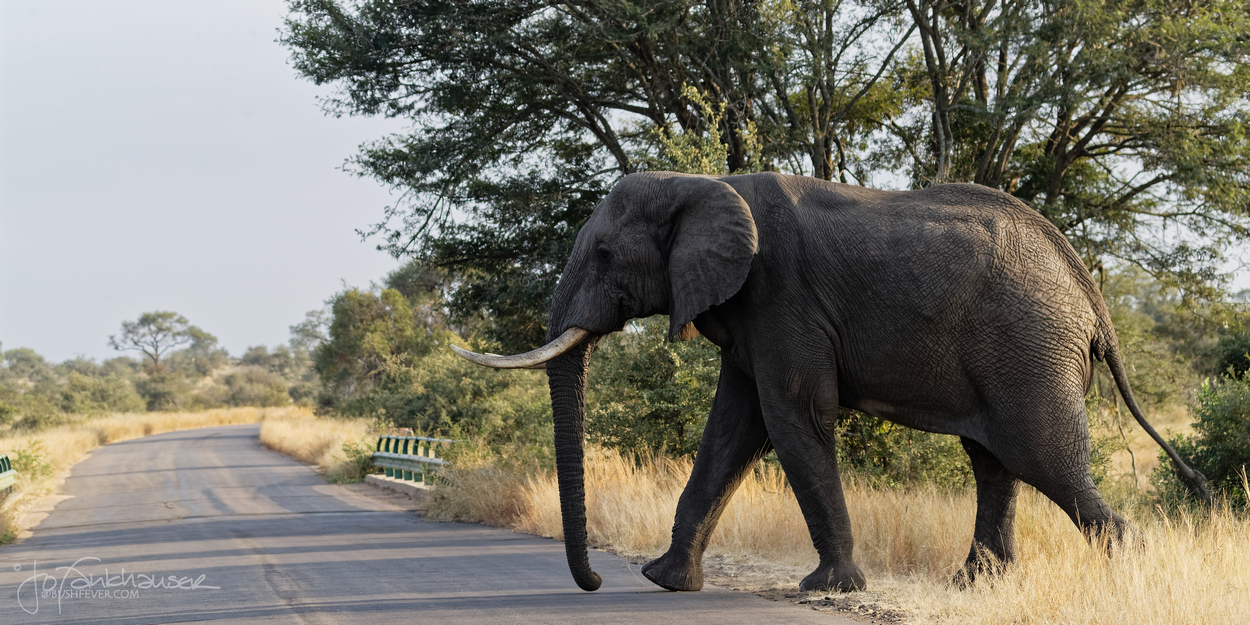
We fixed our attention on the two storks as they waded in the pond below us, totally focussed on catching their breakfast.
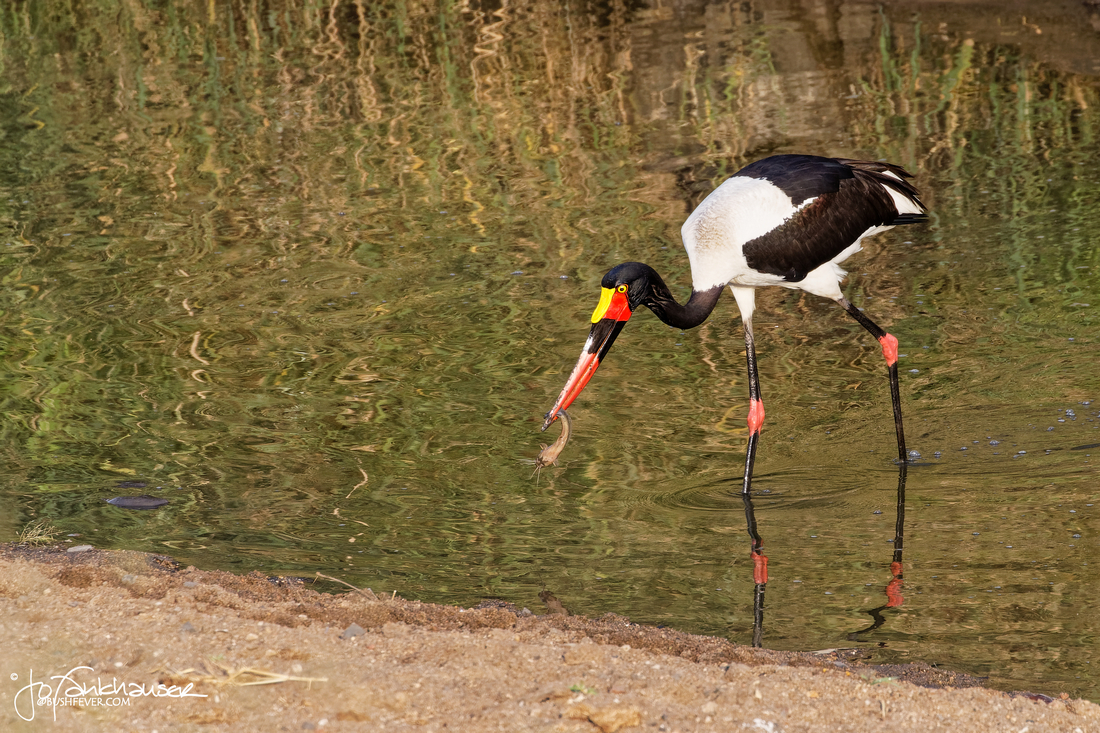
We could not have asked for a better setting and lighting conditions, and we got stuck into taking some of our best ever images of these wonderfully elegant birds.

After some minutes spent admiring the storks’ fishing prowess, we heard loud but distant grunting from the East. Lion?!
I reversed the car for about 50 meters, and then we heard the grunting again, but this time from a bit closer than before. I parked the car on the right hand verge and we waited, encouraged by the regularly repeating grunts coming closer and closer.
A short loud moan focused our gaze in the direction of a huge male lion as it majestically emerged from the tall golden grass just over a hundred meters from us, back-lit by the slowly rising sun.
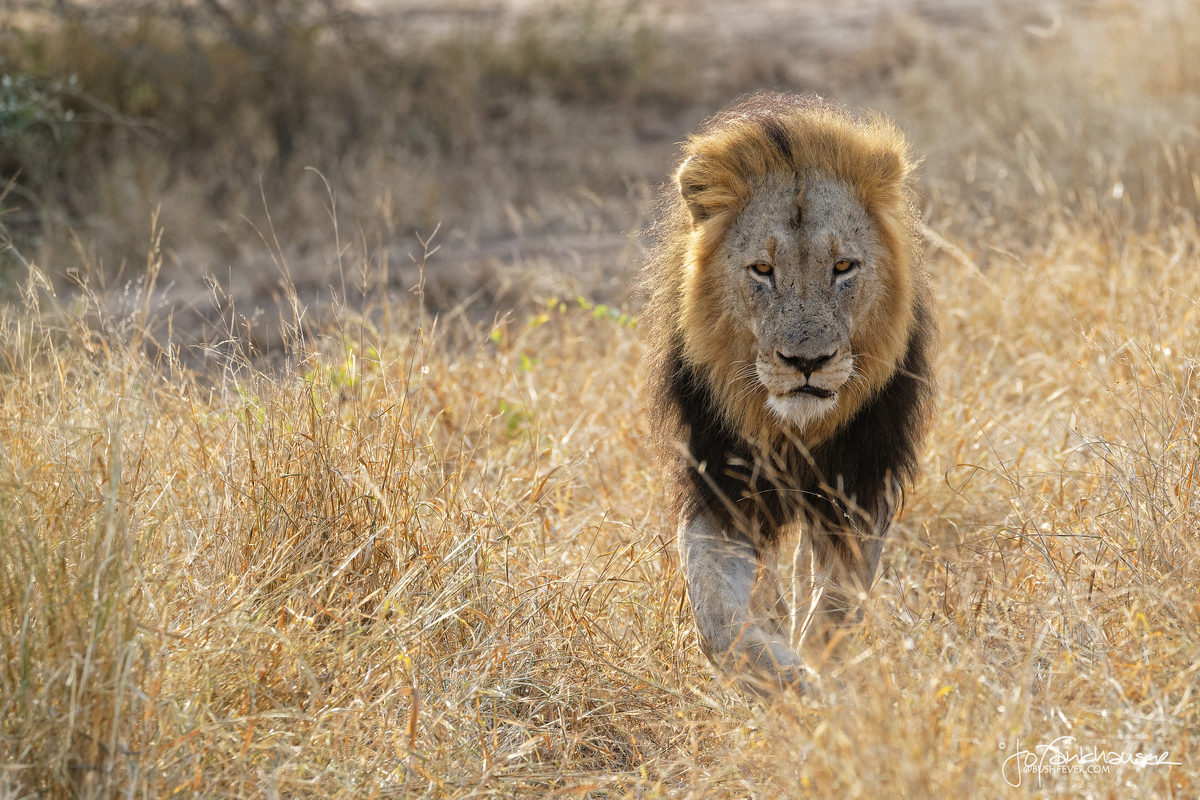
The huge cat steadily padded directly towards us, giving off the occasional grunt or short roar. We heard more grunting and short roars from the direction in which the lion had appeared, and we knew we would be enjoying a repeat performance if all goes to plan!
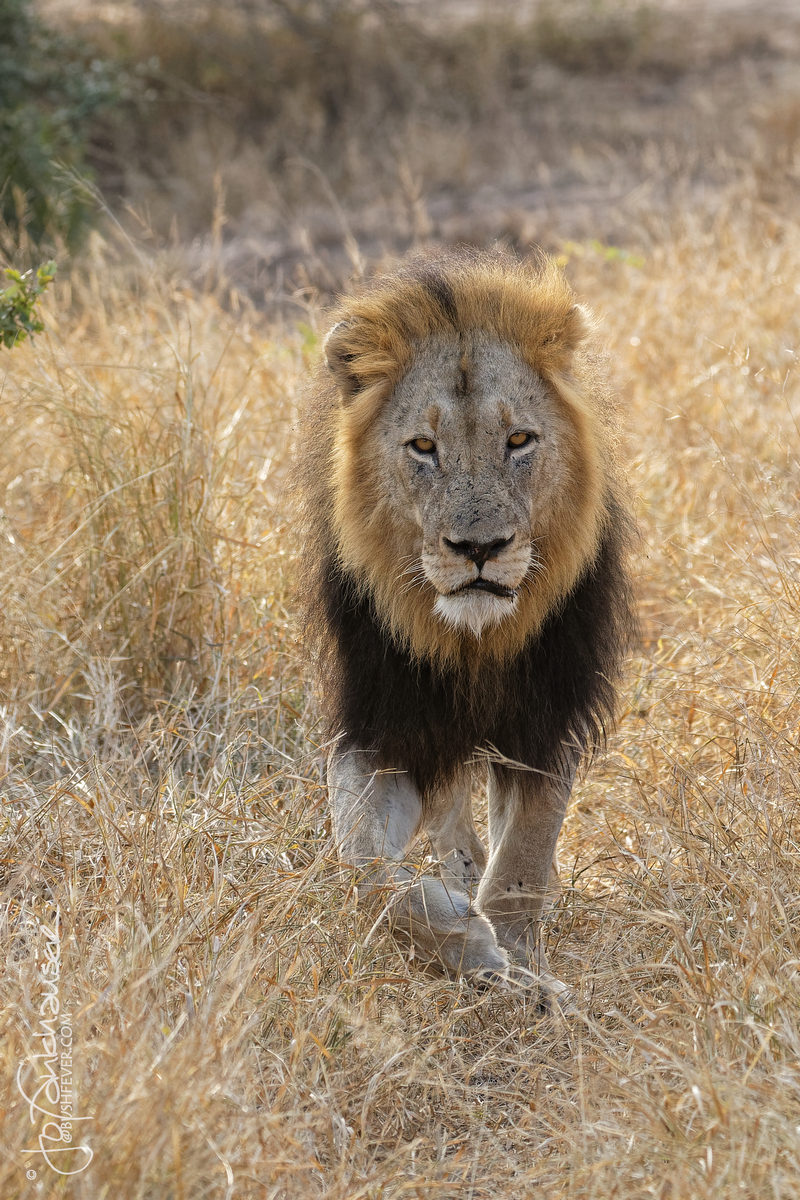
The huge cat crossed the road just in front of our car, pausing for just a few seconds to take a casual look at us. It’s absolutely intimidating looking eyeball-to-eyeball at a 200 kg plus male lion just 3 meters away, with only a thin sheet of glass between you and him. Silvia started to lower her window to take some close-up shots – she was closer to him. I was not at all keen and blocked her by activating the override button…. with the consequential daggers being stared at me – even more intimidating than the lion’s stare earlier.
As the first lion walked off down into the densely vegetated riverbed to our left, Silvia noticed the appearance of a second male lion following the exact same route as the first. He was as large as the first, but with a lot less scarring on his face. This cat followed the exact same procedure that the first male had set, including the brief arrogant stare from his honey coloured eyes.
Once the second lion had followed the first into the vegetation, a third lion announced his impending arrival. After a while he too appeared on the exact same route as the first two; slower, much older and far more battle-scarred – we thought probably their father. He slowly walked past us grunting softly, ignoring us totally as he too disappeared into the bush. Arrogant sod!
The elephant bull had in the interim also moved on, as had the storks, leaving us no option but to drive on towards Orpen in the hope of further wonderful sightings





















